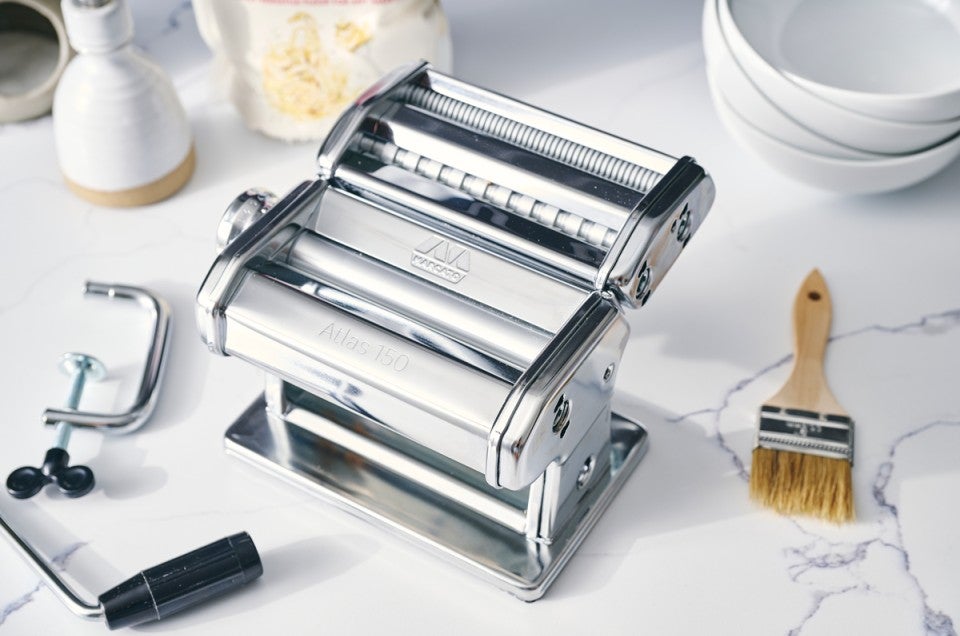


If you already own a pasta machine and have found your favorite pasta recipe (I'd recommend these ravioli), you may have one lingering question: What's the best way to clean a pasta maker?
While cleaning the base is relatively simple, the cutter attachment (which does the actual cutting of the pasta strands, like fettuccine, lasagna, tagliolini, etc.) can — and should — be disassembled for deeper cleaning. Residue buildup can prevent the rollers from creating smooth, supple strands of dough, leading to uneven pasta. Additionally, bits of dried dough can get caught in the rollers and cutters, affecting the quality of your pasta, causing the machine to jam, and potentially damaging it over time. By regularly cleaning your pasta machine, you can ensure consistent results and extend the life of your equipment.
And one more tip: Clean your pasta machine before you put it away! “It ensures you won't be met with a chore when you're eager to roll out your next batch,” says King Arthur Recipe Developer David Turner. “You'll get better pasta results, and you won't encounter surprises — like pasta crumbs attracting unwanted critters in the pantry."
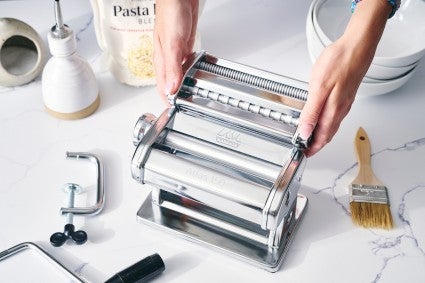
Crank enough pasta dough through your pasta maker and it will inevitably get dirty. Cleaning it can be tricky because of all the nooks, crannies, and tight spaces. To start, clean the outer surfaces of the base and the cutter attachment with a dry cloth and a soft toothbrush or paintbrush. Next, shift your focus to deep-cleaning the more intricate cutter attachment.
Note: This guidance is for our pasta machine, The Mercato Atlas 150, a hand-crank pasta machine that features an adjustable thickness setting and a cutter attachment for creating different pasta shapes.
1) Use a brush or dry cloth to wipe off as much of the dough as you can.
2) If there are still bits of flour or dough remaining, start by removing the attachment from the base. Flip over the attachment and you will see four long metal rods. Use your thumbs to push down on an individual rod and push it sideways to detach it; detach all four of these parts.
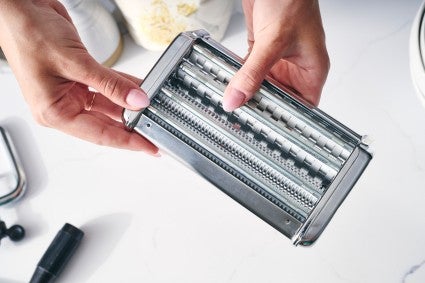
3) Now you will be able to remove the plastic combs that are designed to naturally clean the rollers while the machine is in use. Lift each of the four plastic combs straight up to remove.
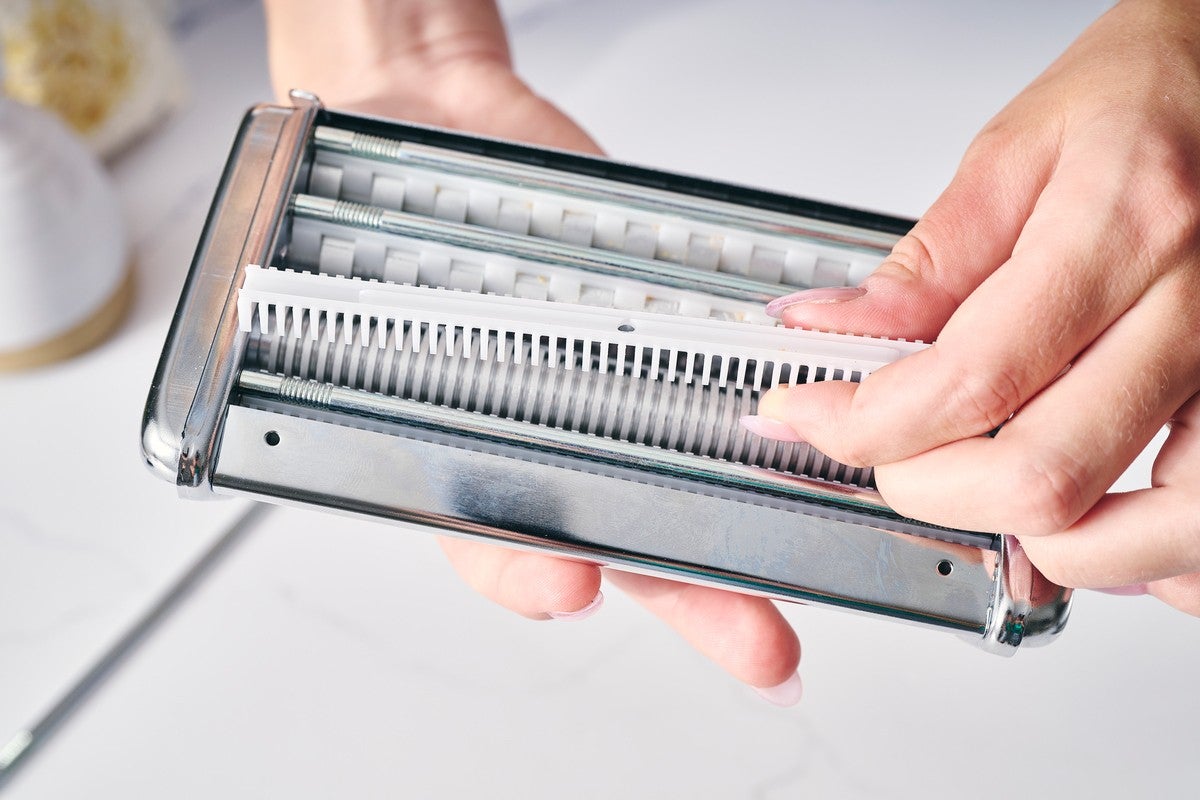
4) To clean the rods and combs, you can brush with a dish towel or a microfiber cloth, or you can wash with cold water or a food-safe disinfectant to ensure they're free from any lingering pasta bits.
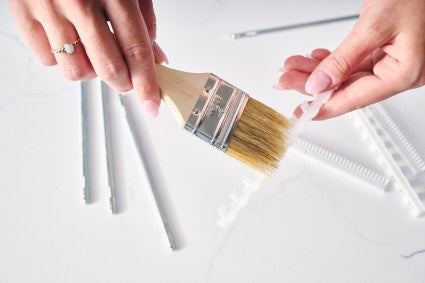
5) With the rods and combs removed, you can now clean the exposed cutters (the part that actually cuts the pasta dough!) with a brush. Make sure you've removed any residue between the cutters, too.
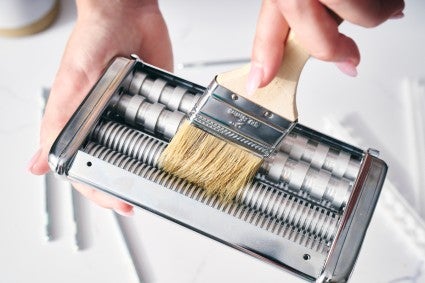
6) Like the rods and the combs, the scrapers can be washed with cold water, or with a disinfectant for surfaces compatible for food contact. It's crucial to let all components dry completely before reassembling.
7) Once everything is dry, reinsert the rods and combs by reversing the removal process — place the four plastic combs back in place over their matching roller, then place the rods back in by inserting into one side, pushing down and placing the opposite side into place. Your machine is now ready for your next pasta-making session!
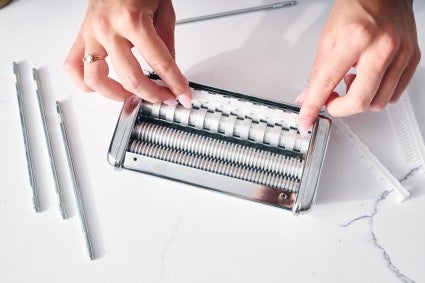
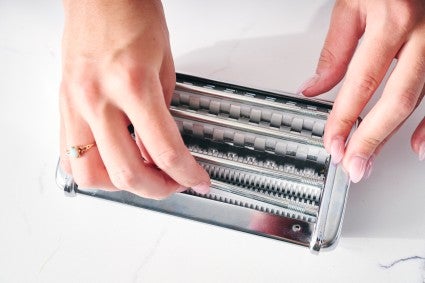
Storage: Store your pasta machine in a dry place to avoid any moisture-related issues, such as rust, corrosion, mold, or mildew.
Lubrication: Should you notice any squeaking during use, a few drops of food-grade Vaseline oil applied at the ends of the rollers can help maintain smooth operation. Our Test Kitchen opts for a couple drops of mineral oil.
Avoid dishwashers: Never place any parts of your pasta maker in the dishwasher, as the heat and detergents can damage them.
While caring for your pasta machine might not be the most glamorous part of the pasta-making process, it's essential for keeping your equipment in top condition. By following these simple steps, you'll ensure that your machine remains a reliable tool for crafting homemade pasta for years to come.
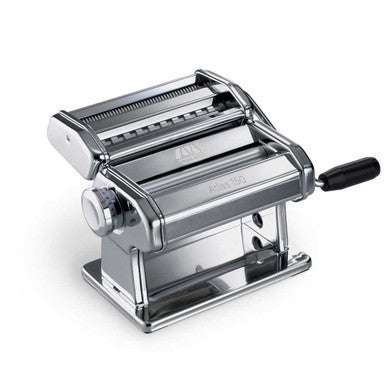
Cover photo by Raymond Prado.

